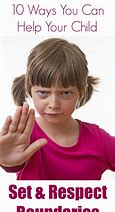How To Set Boundaries With Children Using Gentle Discipline Methods
Parenting is a challenging but rewarding journey. As parents, we want to raise our children to be well-adjusted, responsible, and kind individuals. A crucial aspect of this is setting clear boundaries with our children. But how do we establish these boundaries without resorting to harsh punishments?
This is where gentle discipline comes into play. Gentle discipline focuses on guiding and supporting children, rather than controlling them. It involves using positive reinforcement and understanding the root cause of a child’s behavior to help them make better choices.
This blog post will dive into the key principles of gentle discipline, exploring how to set effective boundaries with children. We’ll cover everything from communicating effectively to managing challenging behaviors, helping you create a safe, loving, and structured environment for your children to flourish.
Understanding Gentle Discipline: A Shift from Punishment to Guidance
Gentle discipline is a parenting approach based on empathy, understanding, and respect. It’s about shifting away from traditional methods of punishment and instead focusing on guiding and supporting children’s emotional and social development. Instead of resorting to yelling or physical punishment, gentle discipline emphasizes helping children learn from their mistakes and build self-control.
The Importance of Boundaries: Creating a Safe and Secure Environment
Boundaries are essential for a child’s development. They provide structure and predictability, helping children feel safe and secure. Boundaries also give children clear expectations for behavior, which allows them to develop a sense of responsibility and self-reliance.
Imagine a child playing in the park. They have a clear understanding of where the playground ends and the street begins. This is a physical boundary, protecting them from potential harm. Likewise, boundaries set by parents help children navigate the world of social interactions and relationships.
Communicating Effectively: Talking to Children About Boundaries
The key to setting boundaries is clear communication. It is vital to talk to children about the expectations you have for them, the reasons behind these boundaries, and the consequences for breaking those boundaries.
When talking to children about boundaries, it’s important to:
- Speak calmly and respectfully. Avoid getting angry or using harsh language.
- Use “I” statements to express your feelings. For example, instead of saying “You always leave your toys scattered all over the place,” you could say “I feel frustrated when I see toys scattered around the house.”
- Explain the reasons behind the boundary. Help children understand why it’s important for them to follow a particular rule.
- Focus on the positive. Instead of emphasizing the negative consequences, focus on the positive outcomes of following the rules.
Setting Clear Expectations: Defining Rules and Consequences
Once you’ve communicated effectively, it’s time to set clear expectations. This involves defining the rules, which are the boundaries you want your child to follow. For example, you might establish a rule that screen time is limited to an hour each day. It’s also important to outline the consequences of breaking the rules, ensuring that these consequences are natural, logical, and age-appropriate.
Natural and Logical Consequences: Helping Children Understand the Impact of Their Actions
Instead of imposing arbitrary punishments, gentle discipline advocates for natural and logical consequences. These consequences are directly related to the child’s actions and help them understand the impact of their choices. For example, if a child forgets their lunchbox at home, the natural consequence is that they might go hungry until they get home.
By experiencing the natural consequences of their actions, children learn to take responsibility for their choices.
Positive Reinforcement: Encouraging Desired Behaviors
While setting boundaries and consequences is important, it’s also crucial to acknowledge and reward positive behaviors. This is where positive reinforcement comes in. Positive reinforcement encourages desired behaviors by providing a pleasant stimulus when the desired behavior occurs.
This can involve verbal praise, a special privilege, or a small reward. The key is to be consistent and provide specific feedback.
For example, instead of simply saying “Good job,” you could say, “I really appreciate that you helped clean up the kitchen after dinner. You made my job so much easier!”
Managing Tantrums and Big Emotions: Calming Strategies for Both Parent and Child
It’s normal for children to have big emotions, especially when their boundaries are challenged. When a tantrum erupts, gentle discipline encourages parents to stay calm and supportive. Instead of yelling or getting frustrated, try to understand the root cause of the tantrum.
Once you understand the underlying reason for the outburst, you can help your child express their emotions in a healthy way. Validate their feelings by saying things like “I see you’re feeling really angry right now.”
Maintaining Consistency and Patience: Building Trust and Understanding
Consistency is vital when setting boundaries. Children need to know that the rules apply to everyone and are enforced consistently. This helps children feel secure and understand what is expected of them.
Patience is equally important. It takes time for children to learn new behaviors, and there will be times when they slip up. Instead of getting frustrated, stay calm and remind them of the rules.
Building a Strong Parent-Child Connection: The Foundation for Effective Boundaries
Effective boundaries are built on a foundation of trust and respect. A strong parent-child connection provides the emotional safety and security necessary for children to thrive.
Spending quality time together, engaging in meaningful conversations, and expressing love and affection can strengthen this bond. When children feel loved and understood, they’re more likely to cooperate with the boundaries you’ve set.
Adapting to Different Ages and Stages: Tailoring Your Approach to Your Child's Development
As children grow and develop, their needs and understanding of boundaries change. It’s important to adapt your approach to your child’s age and stage of development. For example, a toddler might need more concrete explanations and simpler consequences than a school-aged child.
Conclusion: Gentle Discipline: Building Strong Children and Stronger Bonds
Setting boundaries with children using gentle discipline methods is not about control. It’s about fostering healthy development and a strong parent-child bond. By understanding the principles of gentle discipline, parents can create a safe, supportive environment where children learn to navigate their emotions, make responsible choices, and build confidence in their own abilities. Remember, patience, consistency, and love are the cornerstones of effective parenting.
FAQ
1. What if my child is constantly testing my boundaries?
It’s normal for children to test boundaries. This is how they learn what is acceptable and what is not. Stay calm, consistent, and use natural and logical consequences to help them learn from their mistakes.
2. What are some examples of positive reinforcement?
Positive reinforcement can include verbal praise, a special privilege, or a small reward. It’s important to be specific and genuine in your praise. For example, you could say “I really appreciate you cleaning up your toys without being asked.”
3. How do I handle a tantrum?
Tantrums are normal, especially for young children. Try to stay calm and understand the root cause of the tantrum. Validate their feelings and help them find healthy ways to express their emotions.
4. What if I’m struggling to be consistent?
Consistency is hard, and it’s okay to ask for help. Talk to your partner, a friend, or a parenting professional for support.
5. Is gentle discipline appropriate for all ages?
Yes, gentle discipline can be used with children of all ages. However, the specific strategies you use may need to be adjusted to your child’s developmental stage.

